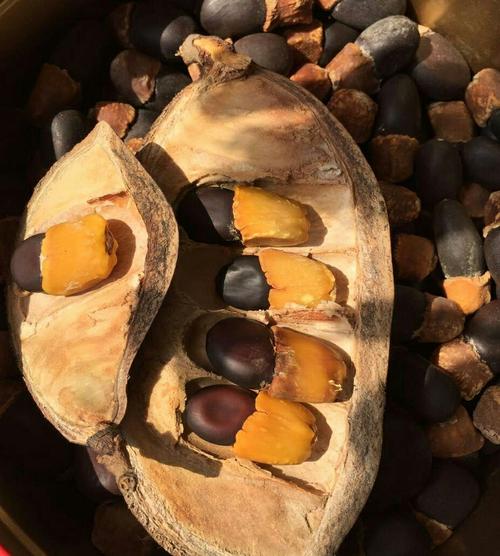Afzelia Africana seed



Afzelia africana: Uses and Benefits
Afzelia africana, commonly known as African mahogany or African Afzelia, is a deciduous tree native to the savanna zones of West and Central Africa. This tree is highly valued for its durable timber, medicinal properties, food uses, and cultural significance.
🌳 General Overview
-
Scientific Name: Afzelia africana
-
Family: Fabaceae (Legume family)
-
Distribution: Widespread in countries like Nigeria, Ghana, Benin, Cameroon, Burkina Faso, and Sudan
-
Habitat: Prefers dry savannas, woodlands, and riverine areas
🪵 Timber and Commercial Value
The heartwood of Afzelia africana is marketed under the name Doussié and is known for its strength, durability, and resistance to termites and decay.
Timber Uses:
-
Flooring (including underfloor heating)
-
High-end furniture and cabinetry
-
Boat and ship construction
-
Railway sleepers
-
Musical instruments
-
Interior paneling and architectural joinery
-
Kitchenware, sporting goods, and turned items
Characteristics:
-
Color: Orange-brown to reddish-brown
-
Texture: Moderately coarse, interlocked grain
-
Density: High (approx. 0.80–1.00 g/cm³)
-
Internationally traded and highly prized
🥗 Food and Agricultural Uses
For Humans:
-
Leaves: Young leaves are cooked as Vegetables or mixed with cereal-based dishes.
-
Seeds: The orange pulp (aril) around the seeds is sweet and edible.
-
seed Flour: Ground seeds are used as a protein-rich flour to enhance local dishes.
For Animals:
-
Fodder: Leaves are highly valued as dry-season forage for livestock such as cattle and goats.
-
Wildlife Feed: Pods and seeds are consumed by wild animals.
Agroforestry Use:
-
As a legume, the tree fixes nitrogen, improving soil fertility.
-
Integrates well into agro-silvo-pastoral systems (trees + crops + livestock).
💊 Medicinal Applications
Used in African traditional medicine to treat a wide variety of conditions:
-
Leaves and Bark:
-
Used to treat fever, stomach ache, dysentery, malaria, hernia, and back pain
-
Applied externally for rheumatism and joint pain
-
-
Roots and Seeds:
-
Used for treating epilepsy, hypertension, and STDs
-
Bark sometimes used as fish poison
-
Modern Research:
-
Antioxidant and Antibacterial: Extracts show activity against MRSA, E. coli, and other pathogens.
-
Anti-inflammatory: Leaf extract gel outperformed diclofenac in lab trials.
-
Anti-diabetic and analgesic: Water extracts from the bark showed blood sugar-lowering and pain relief effects in studies.
🛐 Cultural and Spiritual Importance
-
In many African communities, Afzelia africana is considered a sacred tree.
-
It plays a role in traditional rituals and is often protected by taboos.
-
Symbolizes fertility, protection, and spiritual connection in various ethnic groups.
⚠️ Conservation Status
-
Listed as Vulnerable on the IUCN Red List due to overharvesting and habitat loss.
-
Logging for high-value timber and lack of regeneration threaten its natural populations.
-
Conservation efforts include sustainable harvesting practices, community protection, and cultivation programs.
✅ Summary Table
| Use Category | Details |
|---|---|
| Timber | Durable, termite-resistant, used in construction, furniture, flooring |
| Food | Edible leaves, seed pulp, protein-rich flour |
| Medicine | Treats fever, infections, inflammation, diabetes, pain |
| Livestock Feed | Excellent dry-season fodder for cattle and goats |
| Cultural Value | Sacred in rituals, symbol of protection |
| Agroforestry | Soil improvement via nitrogen fixation |
| Conservation | Vulnerable species; protected by traditional taboos and scientific programs |
Afzelia africana represents a valuable multi-purpose tree that supports health, ecology, livelihoods, and culture in many African regions. With the right balance between conservation and utilization, it can continue to serve both traditional communities and modern markets sustainably.
